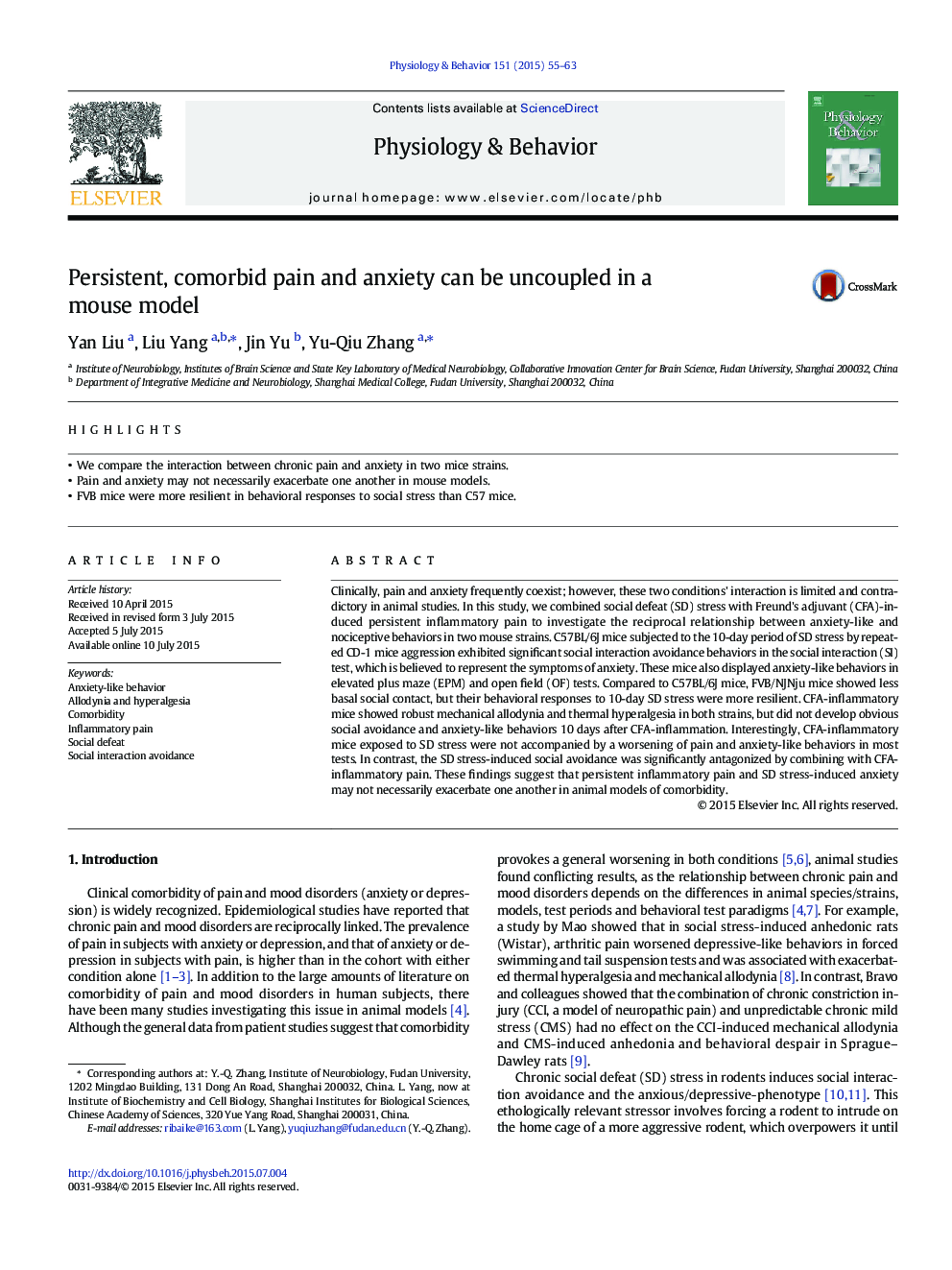| Article ID | Journal | Published Year | Pages | File Type |
|---|---|---|---|---|
| 5923231 | Physiology & Behavior | 2015 | 9 Pages |
â¢We compare the interaction between chronic pain and anxiety in two mice strains.â¢Pain and anxiety may not necessarily exacerbate one another in mouse models.â¢FVB mice were more resilient in behavioral responses to social stress than C57 mice.
Clinically, pain and anxiety frequently coexist; however, these two conditions' interaction is limited and contradictory in animal studies. In this study, we combined social defeat (SD) stress with Freund's adjuvant (CFA)-induced persistent inflammatory pain to investigate the reciprocal relationship between anxiety-like and nociceptive behaviors in two mouse strains. C57BL/6J mice subjected to the 10-day period of SD stress by repeated CD-1 mice aggression exhibited significant social interaction avoidance behaviors in the social interaction (SI) test, which is believed to represent the symptoms of anxiety. These mice also displayed anxiety-like behaviors in elevated plus maze (EPM) and open field (OF) tests. Compared to C57BL/6J mice, FVB/NJNju mice showed less basal social contact, but their behavioral responses to 10-day SD stress were more resilient. CFA-inflammatory mice showed robust mechanical allodynia and thermal hyperalgesia in both strains, but did not develop obvious social avoidance and anxiety-like behaviors 10Â days after CFA-inflammation. Interestingly, CFA-inflammatory mice exposed to SD stress were not accompanied by a worsening of pain and anxiety-like behaviors in most tests. In contrast, the SD stress-induced social avoidance was significantly antagonized by combining with CFA-inflammatory pain. These findings suggest that persistent inflammatory pain and SD stress-induced anxiety may not necessarily exacerbate one another in animal models of comorbidity.
